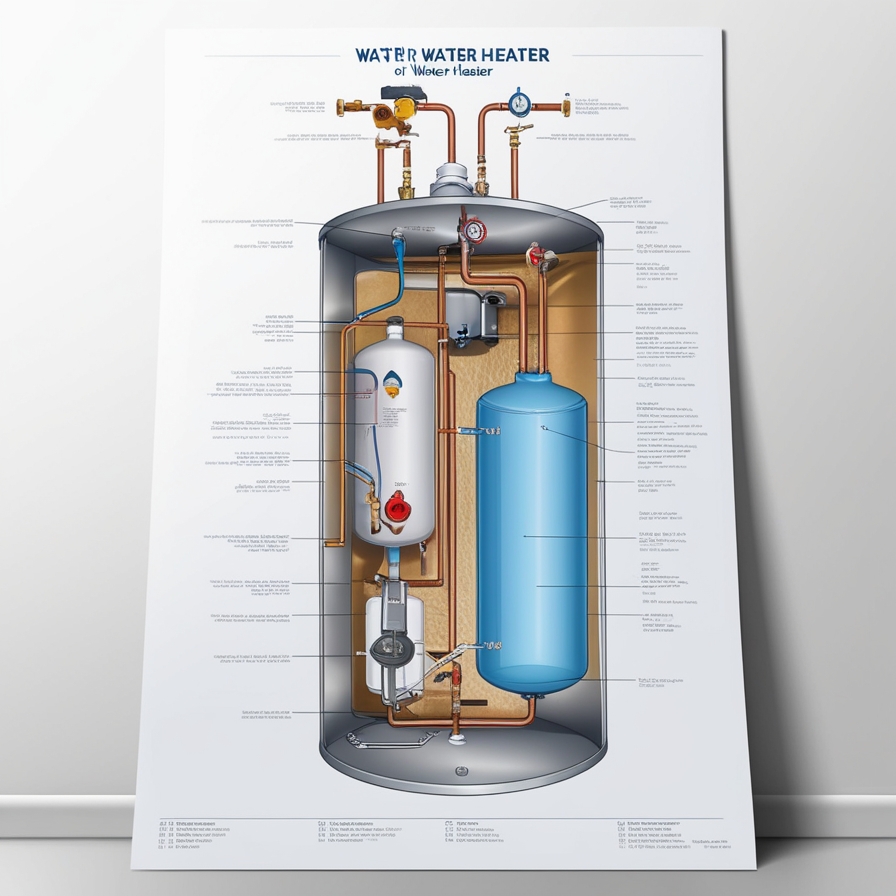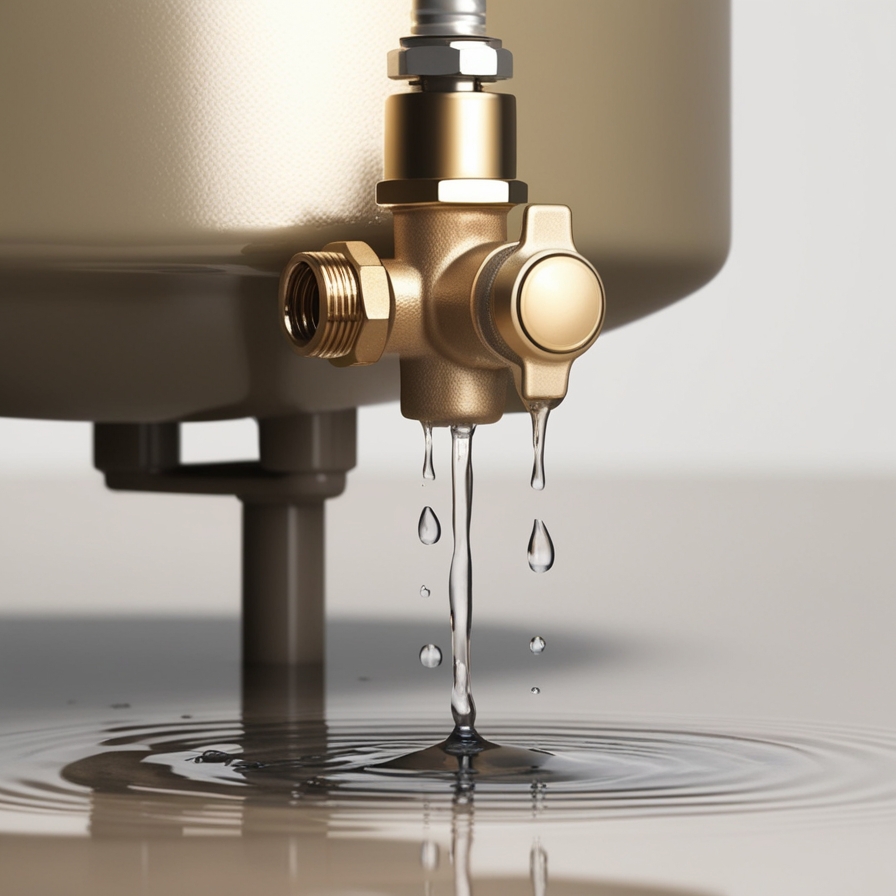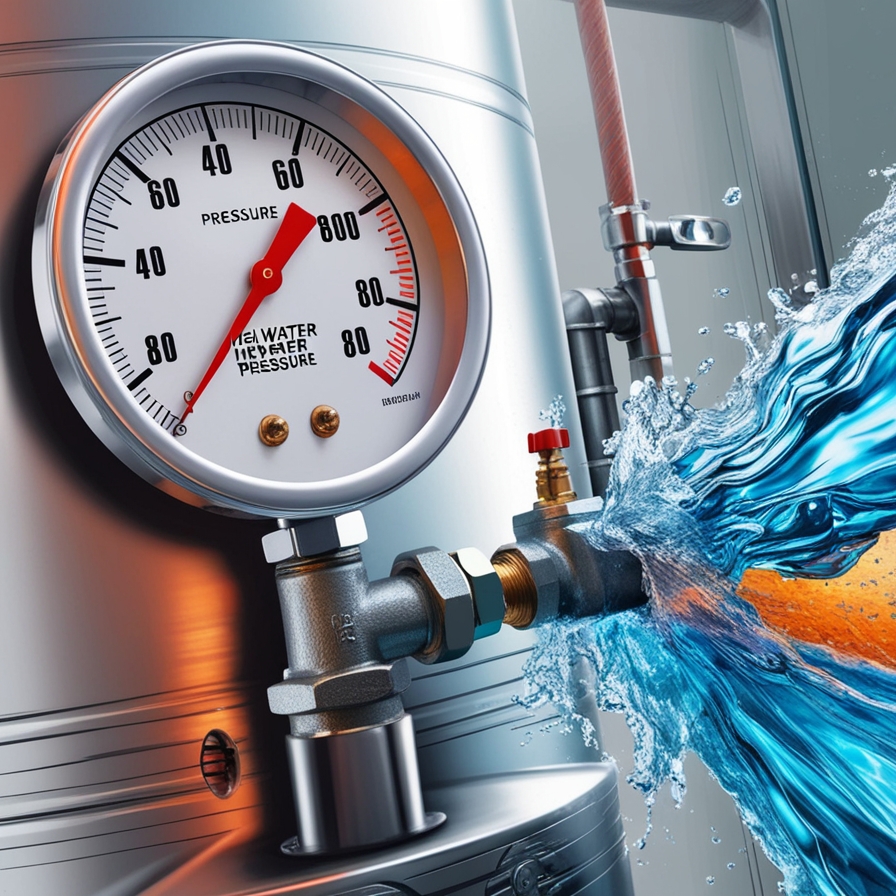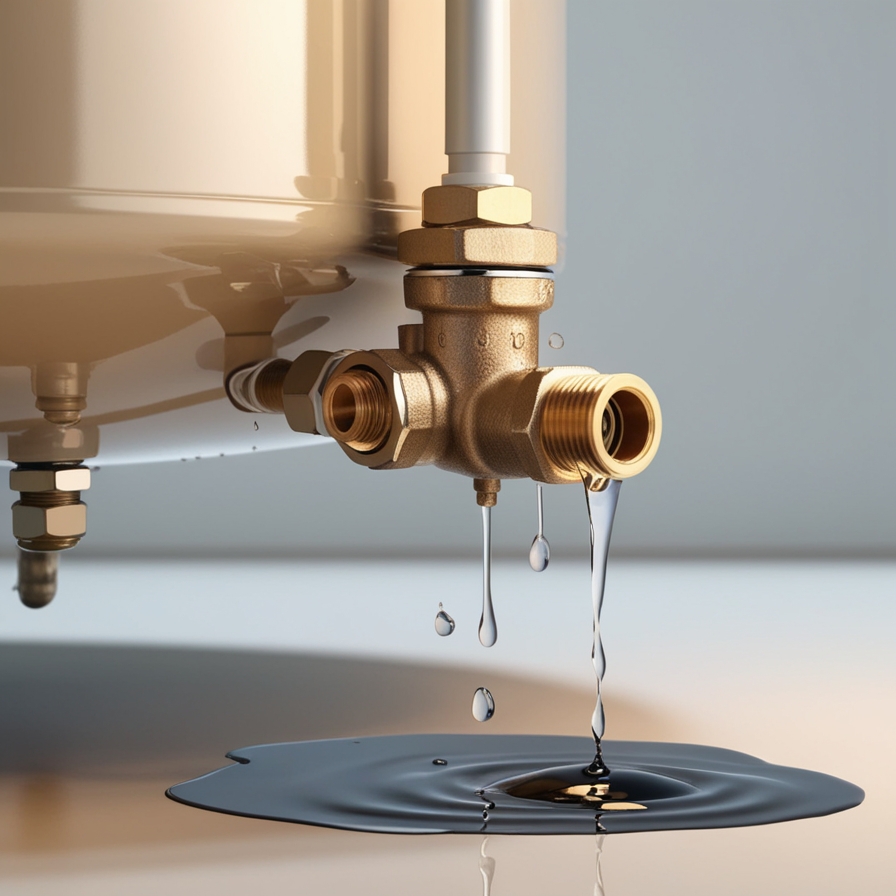Is your water heater pressure relief valve leaking? This common issue can lead to significant problems if not addressed promptly. The pressure relief valve plays a crucial role in maintaining the safety and functionality of your water heater. It helps prevent the buildup of excessive high pressure and temperature, which could otherwise cause damage or even pose safety risks. In this article, we’ll explore everything you need to know about a leaking water heater pressure relief valve, including how to identify the problem, common causes, and steps you can take to fix it.
Table of Contents

What is a Pressure Relief Valve?
A pressure relief valve is a safety feature installed in water heaters to prevent pressure from building up to dangerous levels. It automatically releases water when the pressure inside the tank exceeds a safe threshold, typically set around 150 PSI. This mechanism ensures that the water heater does not explode due to excessive pressure, protecting both the appliance and your home.
Signs Your Water Heater Pressure Relief Valve Leaking
So, how do you know if your pressure relief valve is leaking? Here are some signs to watch out for:
- Visible Water Leaks: The most obvious sign is water dripping from the valve or a puddle forming beneath it.
- Unusual Noises: Hissing or gurgling sounds near the valve can indicate a problem.
- High Water Pressure Readings: If your pressure gauge reads above the normal range, it could be causing the valve to leak.

Common Causes of Pressure Relief Valve Leaks
Several factors can cause a pressure relief valve to leak:
- Excessive Water Pressure: High water pressure in your home can strain the valve, causing it to open and release water frequently.
- Faulty Valve Mechanism: Wear and tear or manufacturing defects can cause the valve to malfunction.
- Temperature and Pressure Imbalance: If the water heater’s thermostat is set too high, it can lead to increased pressure inside the tank, triggering the valve.
Understanding Water Pressure in Your Home
Water pressure plays a significant role in the performance of your water heater. Ideally, your home’s water pressure should be between 40 and 80 PSI. A pressure gauge can help you monitor this. If the pressure consistently reads above 80 PSI, it could lead to leaks and other issues with your water heater and plumbing system.

The Dangers of Ignoring a Leaking Pressure Relief Valve
Ignoring a leaking pressure relief valve can lead to several problems, including:
- Potential Water Damage: Continuous leaks can damage flooring, walls, and other structures.
- Risk of Scalding: A malfunctioning valve might not release hot water properly, increasing the risk of scalding.
- Increased Energy Bills: A leaking valve means your water heater is constantly reheating water, leading to higher energy consumption.
How to Check Your Water Heater’s Pressure Relief Valve
Checking your pressure relief valve is an important part of regular maintenance. Here’s how you can do it safely:
- Turn Off the Power and Water Supply: Ensure the water heater is powered off and the cold water supply is closed.
- Lift the Valve’s Lever: Slowly lift the lever on the valve to let water out. If water flows out smoothly and stops when you release the lever, the valve is working correctly.
- Check for Leaks: If the valve continues to leak after testing, it may need replacement.
Steps to Fix a Leaking Pressure Relief Valve
If your valve is leaking, follow these steps:
- Basic DIY Troubleshooting: Tighten any loose connections and check for debris blocking the valve.
- When to Call a Professional: If the leak persists, it’s best to call a plumber to inspect and repair the valve.
Replacing the Pressure Relief Valve
Replacing the valve is a relatively simple process if you have basic plumbing skills:
- Tools Needed: Adjustable wrench, Teflon tape, and a replacement valve.
- Step-by-Step Replacement Guide:
- Turn off the water heater and drain a few gallons from the tank.
- Remove the old valve using an adjustable wrench.
- Wrap the threads of the new valve with Teflon tape.
- Install the new valve and tighten it securely.
Installing an Expansion Tank
An expansion tank is an excellent addition to your water heating system if you experience frequent pressure relief valve leaks. It absorbs excess water pressure, preventing the valve from opening unnecessarily. Here’s how it works:
- Purpose of an Expansion Tank: It provides a cushion for water expansion, reducing pressure on the heater.
- How It Helps Prevent Valve Leaks: By absorbing pressure surges, the expansion tank minimizes stress on the valve.
Adjusting the Water Pressure in Your Home
To maintain the right water pressure:
- Checking and Adjusting Pressure with a Pressure Gauge: Use a gauge to measure water pressure at your hose bib or directly at the heater.
- Ideal Pressure Settings: Adjust your home’s pressure regulator to keep the pressure within the safe range of 40 to 60 PSI.
Preventive Maintenance Tips for Your Water Heater
Regular maintenance can prevent many common issues with your water heater:
- Regular Inspections: Check your heater and valve at least once a year.
- Flushing the Heater: Remove sediment build-up by flushing the heater regularly.
- Testing the Pressure Relief Valve: Ensure the valve functions correctly by testing it periodically.

When to Consider a New Water Heater
If your water heater frequently has issues, it might be time to consider a replacement. Look for these signs:
- Signs of Aging and Wear: Rusty water, loud noises, and reduced efficiency.
- Evaluating Replacement vs. Repair: Compare the cost of repairs with the price of a new unit.
Common Myths About Water Heater Pressure Relief Valves
There are many misconceptions about pressure relief valves, such as:
- Myths and Facts: Some believe a leaking valve means the water heater is about to explode, which is not necessarily true.
- Debunking Common Misconceptions: Proper understanding can help prevent unnecessary panic and ensure the right steps are taken.
Conclusion
Regular maintenance can prevent many common issues with your water heater, including a leaking pressure relief valve. However, if your water heater frequently experiences problems, it may be time to consider a replacement. Look for signs such as inconsistent water temperature or unusual noises. It’s important to debunk common myths about pressure relief valves, as they play a crucial role in maintaining the safety and efficiency of your water heater. Addressing leaks promptly and taking preventive measures can help avoid more significant issues in the future.




